I arrived at Mae Soe Station early the next morning, where there were several trains to Peng Shiluo every day via Sukhothai.
I chose the earliest 7 o’clock shift, and the road from there to Sukhothai was well built-although the front section was a mountain road, the asphalt road was spacious and smooth. After more than two hours of speeding through Dafu, some sections of the road reached a speed of almost 130km/h, and finally arrived at Sukhothai Station.
Sukhothai Station was very cold and cheerless, with only a few passengers getting on and off the large platform. However, as soon as I got off the bus, the station immediately became noisy. In the station, it seemed as if I had emerged from the ground. Suddenly, many local people holding signs or a box full of business cards appeared. When you walk over and have a look, it turns out that the name of the local hotel is printed on these brand cards, and the local people will introduce the situation of each hotel to the tourists in detail. I chose GardenGeusthouse among them, and they immediately called a tuk-tuk for 50B to go to GardenGeusthouse.
After arriving at the destination, I found that it was not too far away. GardenGeusthouse is a unique and elegant inn-the most distinctive feature is that there is a row of wooden guest rooms in the back standing in the quiet garden. The check-in price is 150B per day for the front dormitory and 350B per day for the guest rooms in the back garden.
Rooms in GardenGeusthouse Garden:
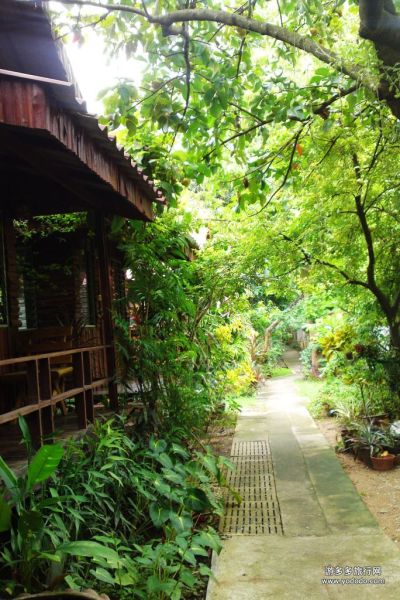
After settling down, he came to the street. The Sukhothai site was about 12km away from the new city, so he quickly inquired about the car to the site. After being instructed by several passers-by, I finally saw the convertible going there at the bridge head of the new city.
Sukhothai New Town:

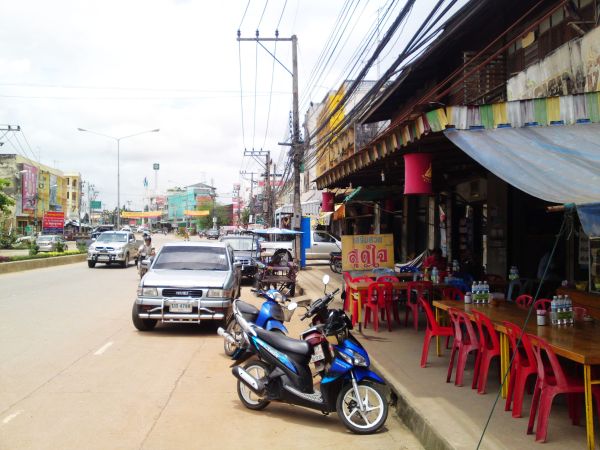
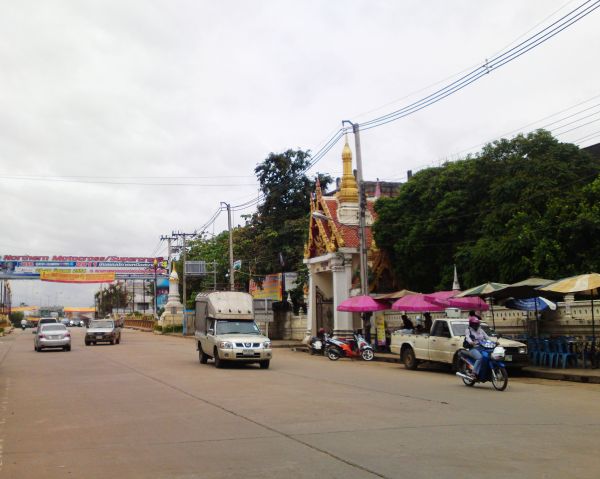

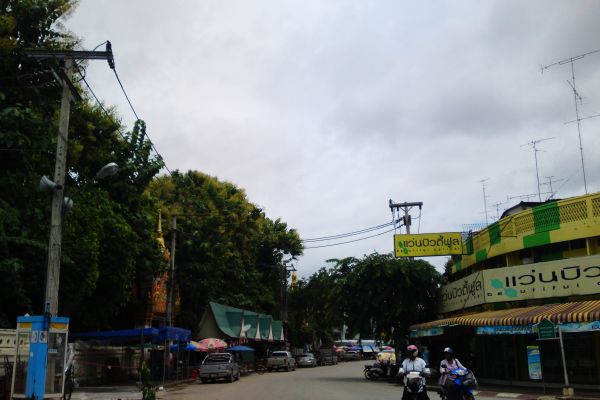

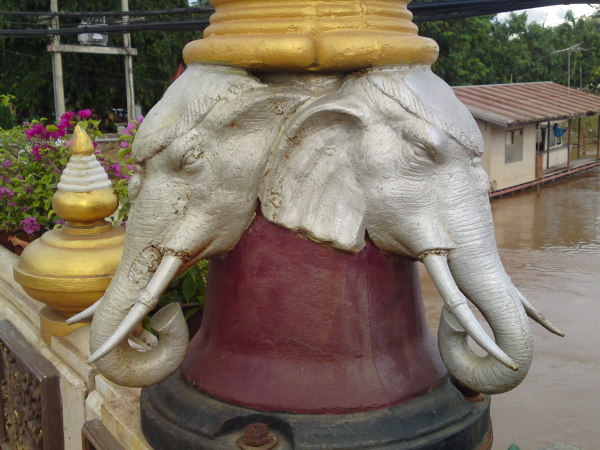
It is about half an hour’s drive from the new town to the ruins park.
Sukhothai Historical Park:
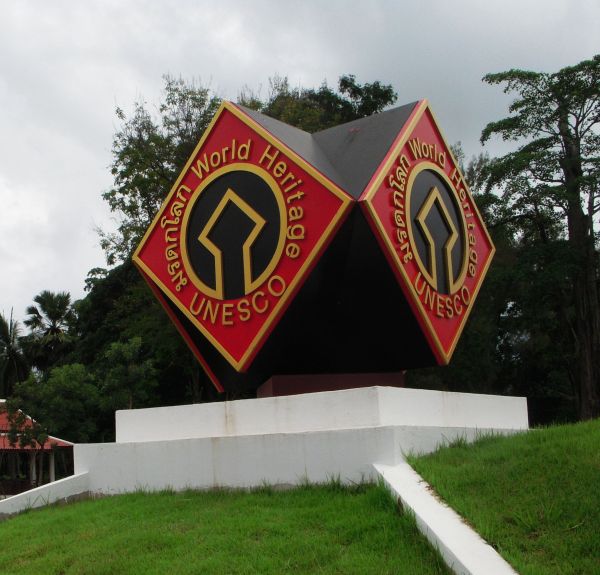
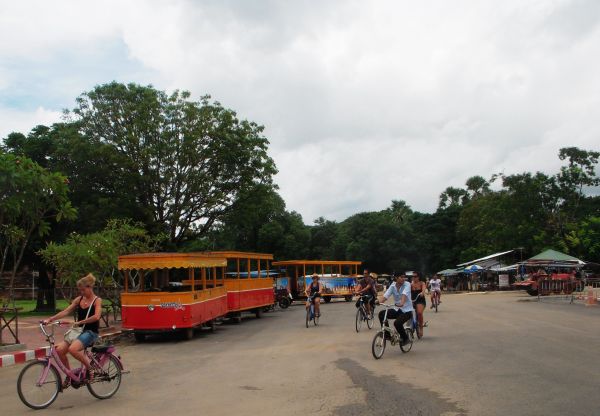
Sukhothai is the first capital of Thailand. The time when Sukhothai was the capital was historically called Sukhothai period or Sukhothai dynasty, which was roughly from the middle of the 13th century to the end of the 14th century. The rise of Sukhothai Dynasty was mainly due to the sandwiched between the Mongolian and Yuan regimes in the north and Angkor regimes in the south. Neither regime had time to take care of this middle zone, which provided an excellent historical opportunity for the rise of Sukhothai Dynasty. The Sukhothai Dynasty, which lasted for 200 years, was a golden period for the development of Thai culture. The religious art and architectural style of this era are considered to be the most outstanding in Thai history. The most elegant buildings of this era are now preserved in Sukhothai Historical Park. Sukhothai Historical Park is divided into five parts: Central District and Southeast Northwest. Among them, the Central District is the most concentrated.
Entering Sukhothai Historical Park:
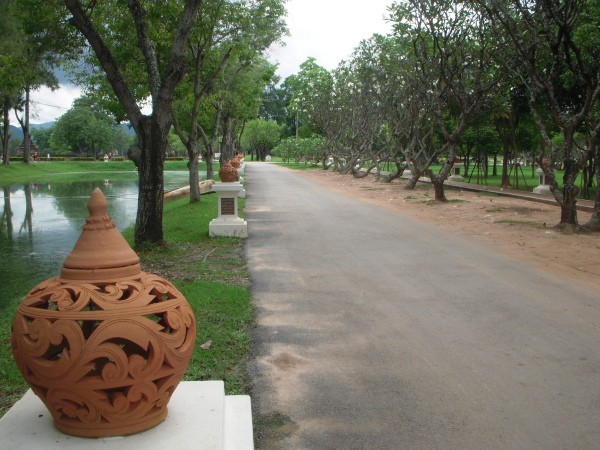
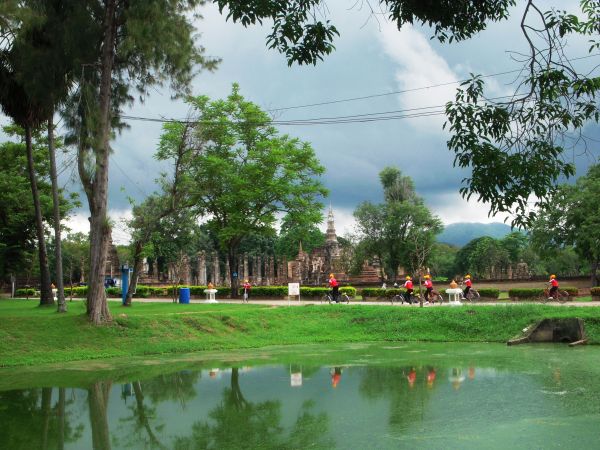
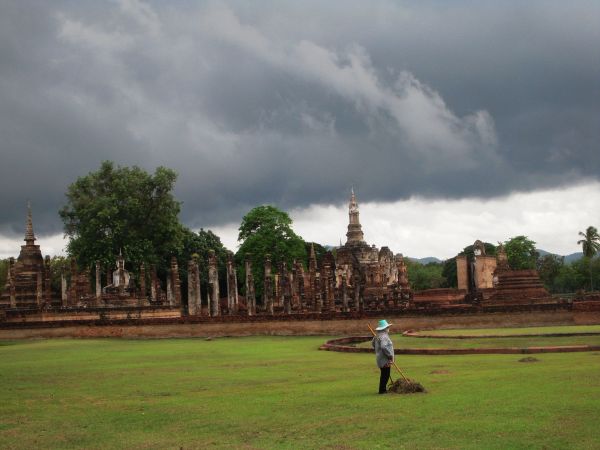
Here are all classic lotus pagodas. The top of the pagoda is a conical spiral tower with a square tower body in the middle and a unique base under the square tower body. There are also some bell-shaped pagodas of Ceylon style in South Asia.

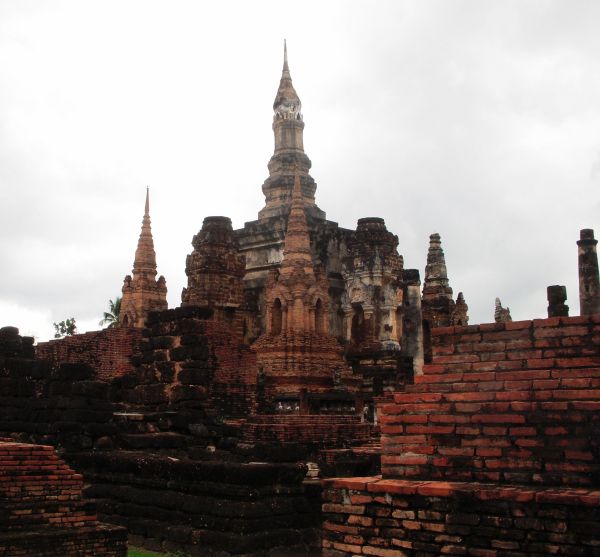
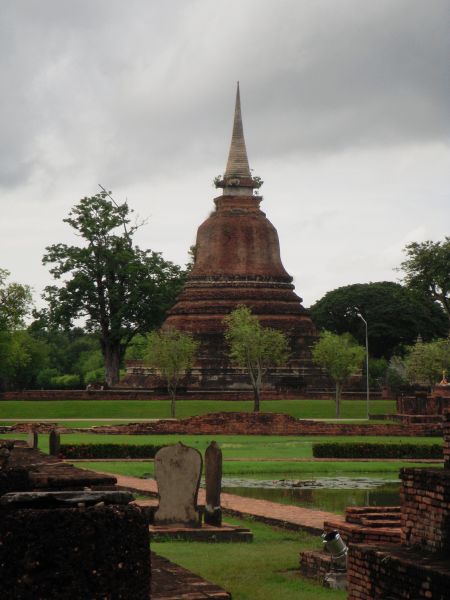

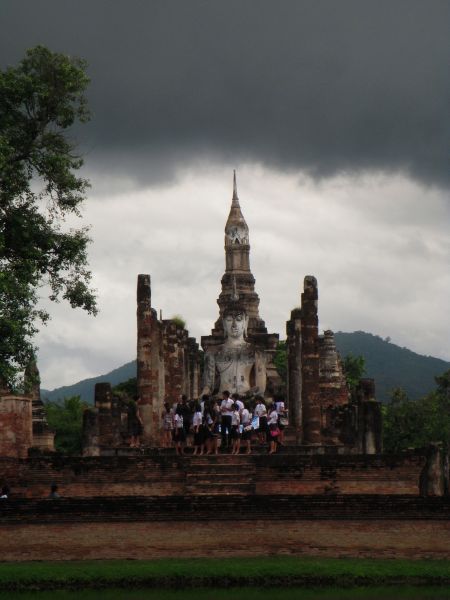
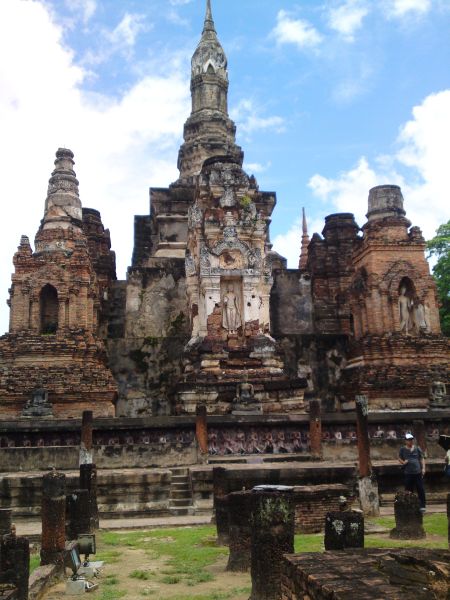
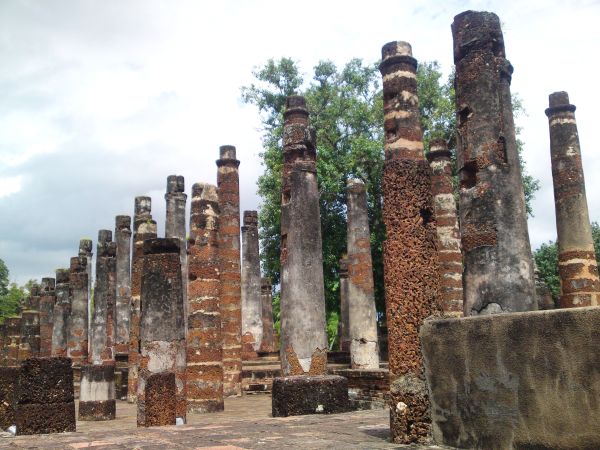

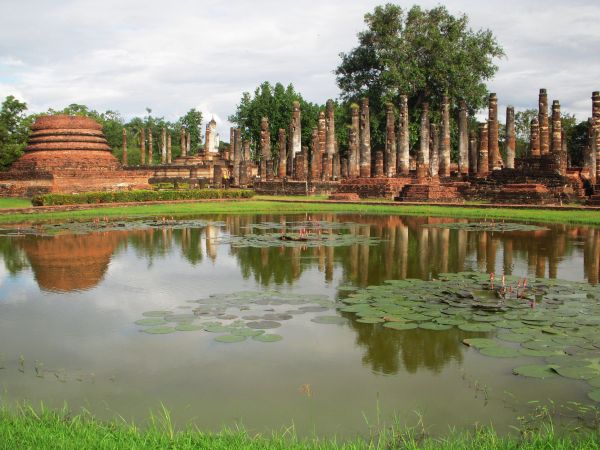
The buildings in the site are beautiful in shape. In some places, the Buddha statues in the pagoda are as finely carved as Angkor’s. Pool is often beside the Buddha statues in the pagoda. Water lilies and lotus flowers are in bud in it, which is especially beautiful. The whole historical park is shrouded in a peaceful and peaceful atmosphere.

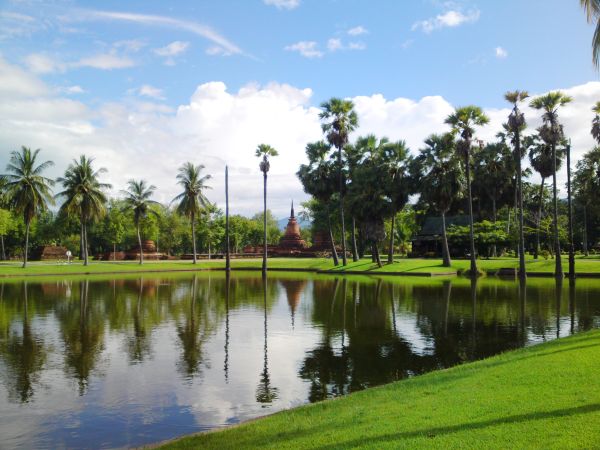
In the distance, up the steps is the statue of Langanxing, the wisest and greatest king of Sukhothai Dynasty. During his reign, he repelled Angkor and expanded the territory of Sukhothai Kingdom to all areas of present-day Thai territory. At the same time, he also created Thai script, Thailand’s first literary work, and was the founder of Thai culture.
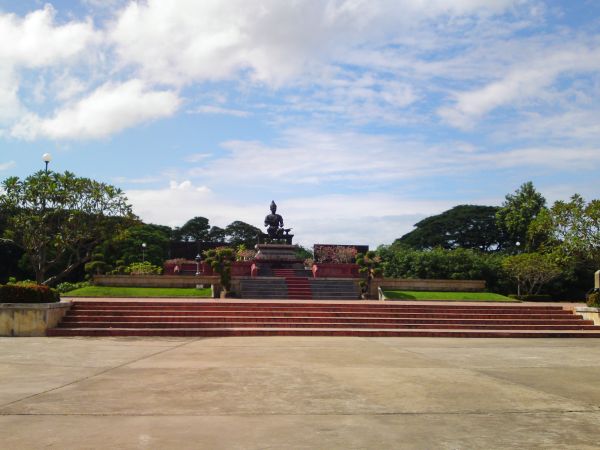
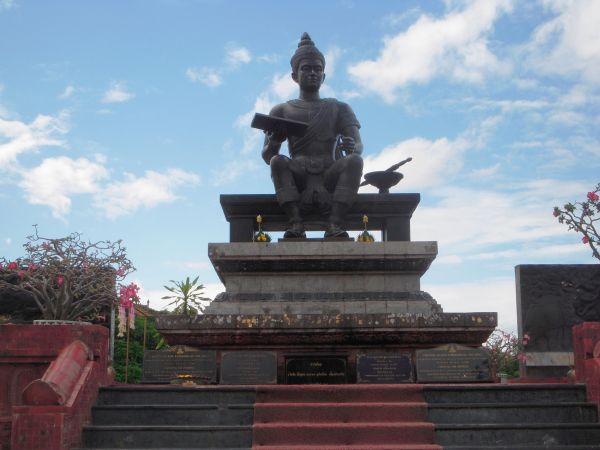
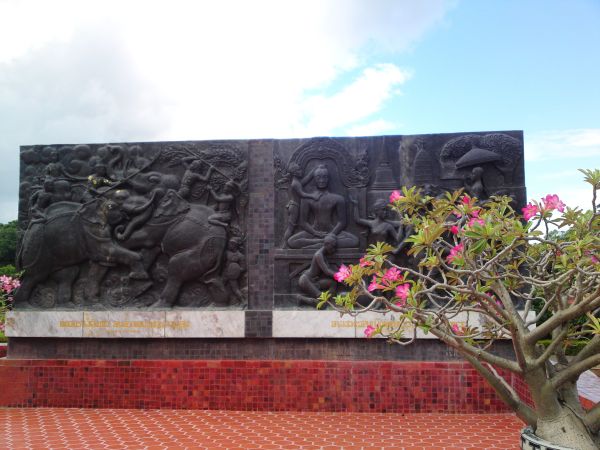
Although the environment in the historical park is beautiful and some pagodas and statues are as finely carved as Angkor, there are not many tourists here and tickets are much cheaper than Angkor.
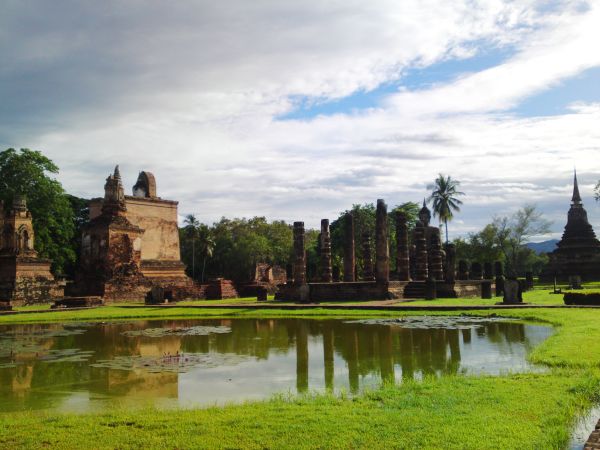
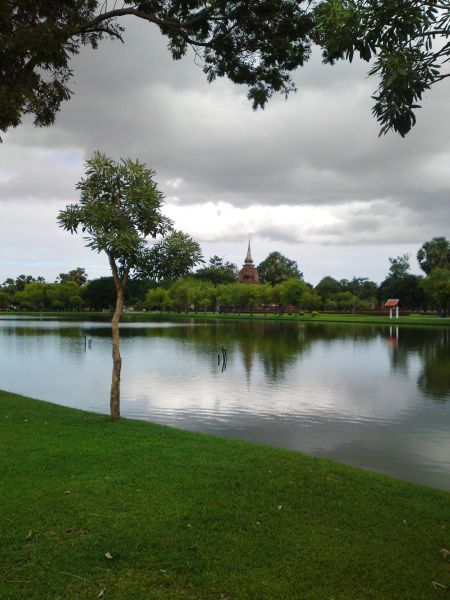


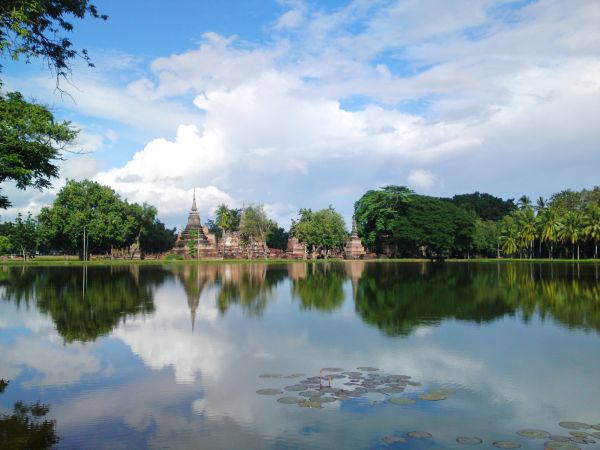
Walking in the peaceful and peaceful historical park, watching the reflection of the solemn and kind ancient Buddha statues and the Buddha statues in the pond when the sun is setting, the cool breeze blows and makes me feel relaxed and happy, as if walking in the western blissful world.
Recent Comments